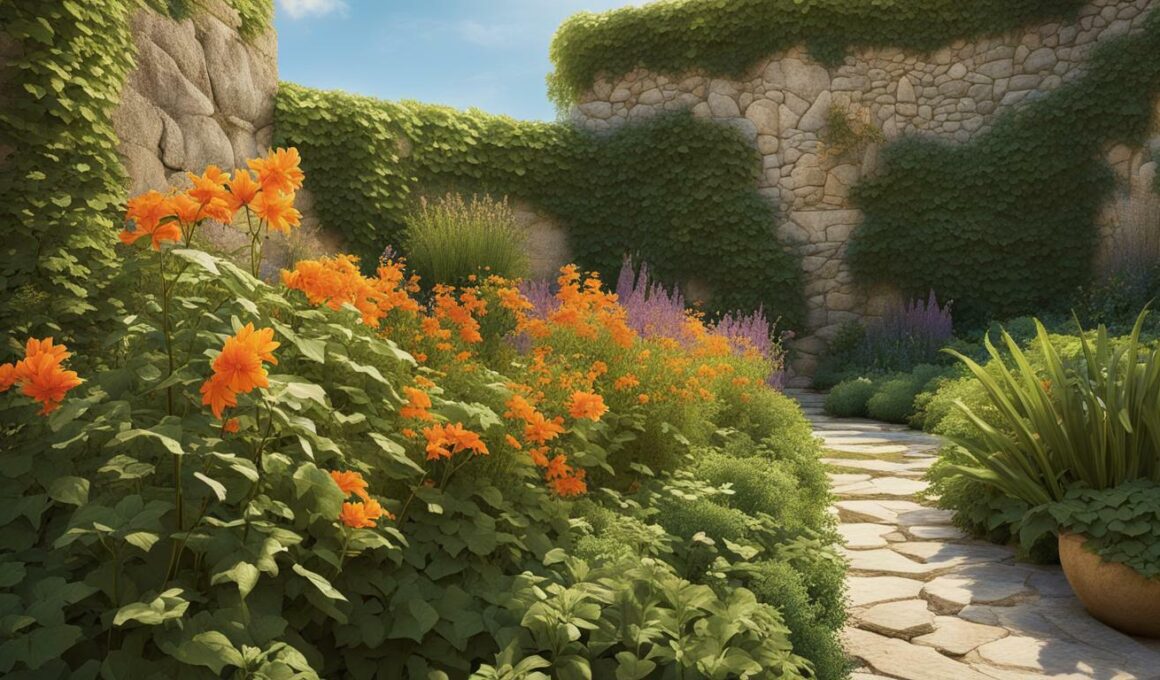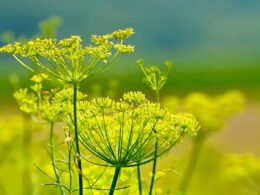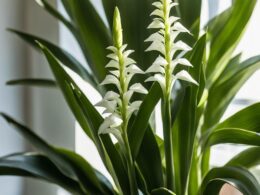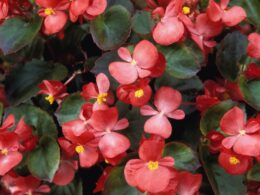Have you ever wondered if honeysuckle and trumpet vine are the same plant or different? Many people are confused by these two popular climbing vines, and it’s no surprise why. Both are known for their fragrant, trumpet-shaped flowers and ability to attract hummingbirds and butterflies to the garden. However, they have their differences as well. In this article, we’ll explore the similarities and differences between honeysuckle and trumpet vine to help you understand which one might be the right fit for your garden.
Post Summary:- Honeysuckle and trumpet vine share similar traits such as their flower shapes and fragrance.
- Honeysuckle and trumpet vine have different growth habits, preferred growing conditions, and responses to pruning.
- Both honeysuckle and trumpet vine can be valuable additions to any garden or landscape.
What is Honeysuckle?
If you’re wondering about honeysuckle and trumpet vine similarities, you’ll want to start with understanding what honeysuckle is all about. Honeysuckle, also known by its botanical name Lonicera, is a woody vine that can climb up to 30 feet tall in favorable conditions.
There are over 180 species of honeysuckle, but the most common type is the Japanese honeysuckle (Lonicera japonica). This variety is an invasive species in some parts of the United States due to its fast growth rate and ability to outcompete native plants.
Despite its reputation for being invasive, honeysuckle is a popular choice for gardeners due to its sweet fragrance and attractive, tubular flowers that range in color from white, yellow, pink, and red.
Are Honeysuckle and Trumpet Vine Related?
While honeysuckle and trumpet vine may share some similarities, they are not closely related. Honeysuckle belongs to the Caprifoliaceae family, while trumpet vine is a member of the Bignoniaceae family. However, they can both be used to climb and cover walls, trellises, and other vertical structures.
What is Trumpet Vine?
If you’re confused about whether honeysuckle and trumpet vine are the same, it’s important to understand what each of these plants is. Trumpet vine, also known as Campsis radicans, is a deciduous climbing plant that is native to the southeastern United States.
One of the most distinguishing features of trumpet vine is its trumpet-shaped flowers, which range in color from red to orange and yellow. It is also a very vigorous plant, capable of growing up to 30 feet tall with a spread of 6-12 feet.
Trumpet vine prefers full sun and well-drained soil, but it can tolerate a wide range of growing conditions. It is also relatively easy to care for, with light pruning needed to control its growth and help it maintain its shape.
While trumpet vine and honeysuckle share some similarities, there are also several key differences between the two plants that are worth exploring.
Similarities Between Honeysuckle and Trumpet Vine
While honeysuckle and trumpet vine may have some noticeable differences, they also share a handful of similarities. Understanding these common characteristics can help you determine which plant is best suited for your garden or landscaping needs.
| Similarity | Description |
|---|---|
| Flowers | Both honeysuckle and trumpet vine produce tubular flowers that are attractive to hummingbirds, butterflies, and bees. The flowers come in a range of colors, including red, orange, yellow, and pink. |
| Climbing Ability | Both honeysuckle and trumpet vine are climbing plants that can attach to and climb up fences, trellises, and walls. Their twining stems allow them to wrap around supporting structures as they grow. |
| Fragrance | Both honeysuckle and trumpet vine produce a sweet, pleasant fragrance that can scent the surrounding area. The fragrance is particularly strong at night. |
| Attractiveness to Pollinators | Both honeysuckle and trumpet vine are known to attract hummingbirds, bees, and butterflies, making them beneficial for pollinator gardens and ecosystems. |
| Maintenance | Both honeysuckle and trumpet vine are relatively low maintenance plants. They can handle some degree of drought and neglect but will benefit from occasional pruning to shape or manage their growth. |
Overall, honeysuckle and trumpet vine share many desirable characteristics, making them both great additions to gardens and landscapes. Choosing between the two will depend on your specific needs and preferences.
Are Bees Attracted to Honeysuckle as Well?
Bees are known to be attracted to honeysuckle due to its abundant nectar production. However, another flowering plant called the trumpet vine also holds a strong appeal for bees. Its bright, vibrant flowers and rich nectar serve as a potent magnet, drawing in bees and providing them with a valuable food source. This trumpet vine’s attraction to bees makes it a beneficial addition to any garden seeking to support these essential pollinators.
Differences Between Honeysuckle and Trumpet Vine
Although honeysuckle and trumpet vine have some similarities, these plants have several key differences that may affect your decision about which one to use in your garden or landscaping project.
| Aspects | Honeysuckle | Trumpet Vine |
|---|---|---|
| Growth habit | Most honeysuckle varieties grow as shrubs, with a few species that can become small trees. They rarely grow above 20 feet tall, and they can spread to 10 feet wide or more. | Trumpet vine is a vigorous climber that can reach up to 30 feet in height, spreading up to 10 feet wide. It attaches itself to surfaces using aerial rootlets, which can damage structures if left uncontrolled. |
| Preferred growing conditions | Honeysuckle prefers full sun to partial shade, well-draining soil, and moderate watering. It can also tolerate some drought and salt sprays. | Trumpet vine prefers full sun and fertile, moist, well-draining soil. It can also tolerate some drought and poor soil conditions. |
| Response to pruning | Honeysuckle can handle pruning well. It responds positively to annual pruning, shaping, and deadheading to promote new growth and healthy flowering. | Trumpet vine is best pruned during dormancy to control its rapid growth and prevent it from damaging structures. Pruning during the growing season can reduce flowering. |
| Potential invasiveness | Honeysuckle is not known to be invasive in most parts of the United States. However, some species, such as Japanese honeysuckle, can be aggressive and spread easily. | Trumpet vine can be invasive in some areas. Its aerial rootlets can attach to wood, stone, and other surfaces, causing damage and making it difficult to remove. |
| Flowers and foliage | Honeysuckle flowers are typically tubular or trumpet-shaped and come in shades of white, yellow, pink, and red. Their foliage is a dark green and can be evergreen or deciduous depending on the species. | Trumpet vine flowers are large, trumpet-shaped, and bright orange-red or yellow. Their foliage is dark green and pinnately compound, with oval leaflets. |
Considering these differences, you may choose one plant over another based on your specific needs and preferences. For example, if you have a small garden and prefer a non-invasive plant with beautiful flowers, you may opt for honeysuckle. On the other hand, if you have a large property and want a fast-growing, visually striking climber, you may choose trumpet vine.
Conclusion
So, are honeysuckle and trumpet vine the same? As we’ve explored, they are not. While they share some similarities, such as the ability to climb and attract pollinators, they differ in their growth habits, preferred growing conditions, and overall appearance.
If you’re looking to add one of these plants to your garden, consider your specific needs and preferences. If you’re looking for a fast-growing vine with show-stopping flowers, trumpet vine may be the way to go. If you want an attractive, fragrant climber with a variety of colors to choose from, honeysuckle may be a better option.
Either way, experimenting with both of these plants is a great way to enhance your garden and attract local wildlife. With their beauty and versatility, you can’t go wrong.
Are Honeysuckle and Trumpet Vine Similar in Terms of Maintenance Requirements?
When it comes to maintenance requirements, there is a difference between honeysuckle and trumpet vine. While both plants are visually similar and offer beautiful blooms, honeysuckle generally requires less maintenance compared to trumpet vine. So, if you’re looking for a low-maintenance option, honeysuckle might be the preferable choice for your garden.
FAQ
Q: Are honeysuckle and trumpet vine the same?
A: No, honeysuckle and trumpet vine are not the same. Although they may share some similarities, they are different plants with distinct features and characteristics.
Q: What is honeysuckle?
A: Honeysuckle is a flowering plant known for its fragrant and colorful blossoms. It is a climbing vine that is often used in gardens and landscapes for its beauty and attractiveness to pollinators.
Q: What is trumpet vine?
A: Trumpet vine, also known as Campsis radicans, is a vigorous climbing plant with trumpet-shaped flowers. It is known for its rapid growth and ability to cover structures such as fences and arbors.
Q: What are the similarities between honeysuckle and trumpet vine?
A: Honeysuckle and trumpet vine share some similarities, including their ability to climb on structures, attractive flowers, and appeal to pollinators. They both add beauty and fragrance to gardens and landscapes.
Q: What are the differences between honeysuckle and trumpet vine?
A: Honeysuckle and trumpet vine have several differences. They vary in their growth habits, preferred growing conditions, response to pruning, and potential invasiveness. Their flowers and overall appearance also differ.
Q: Conclusion
A: In conclusion, honeysuckle and trumpet vine may share some similarities, but they are distinct plants with unique features. It is recommended to experiment with both varieties to determine which one suits your specific garden needs and preferences.









